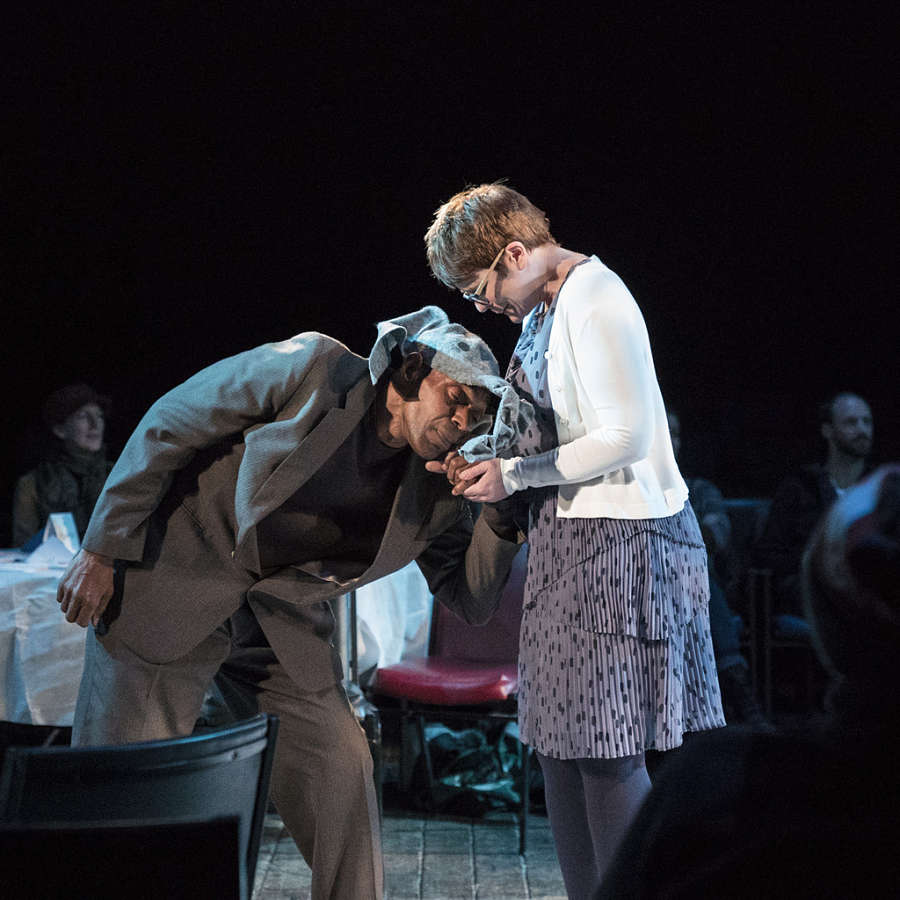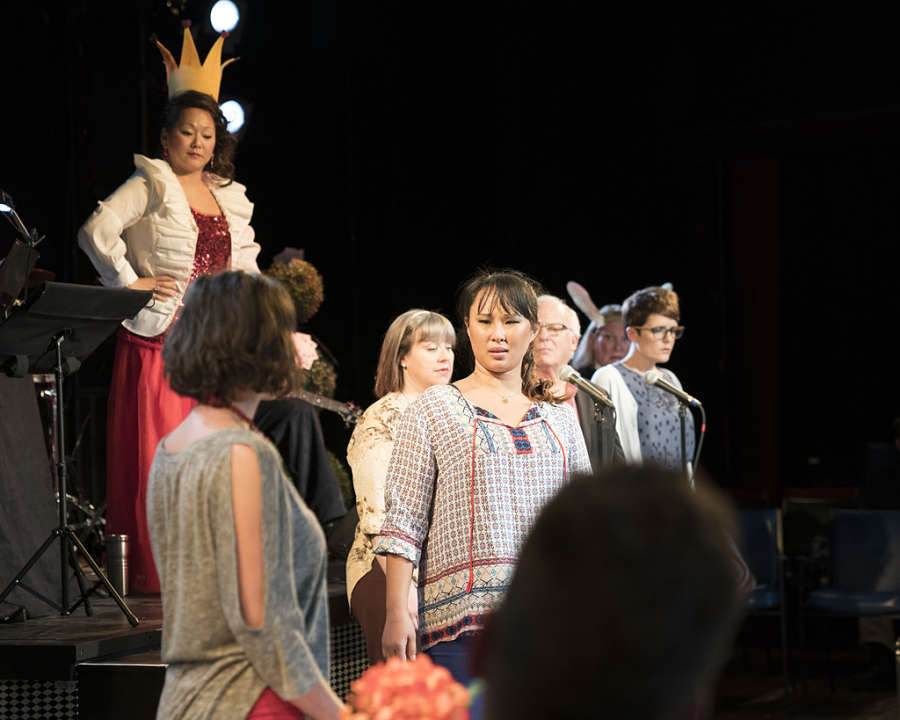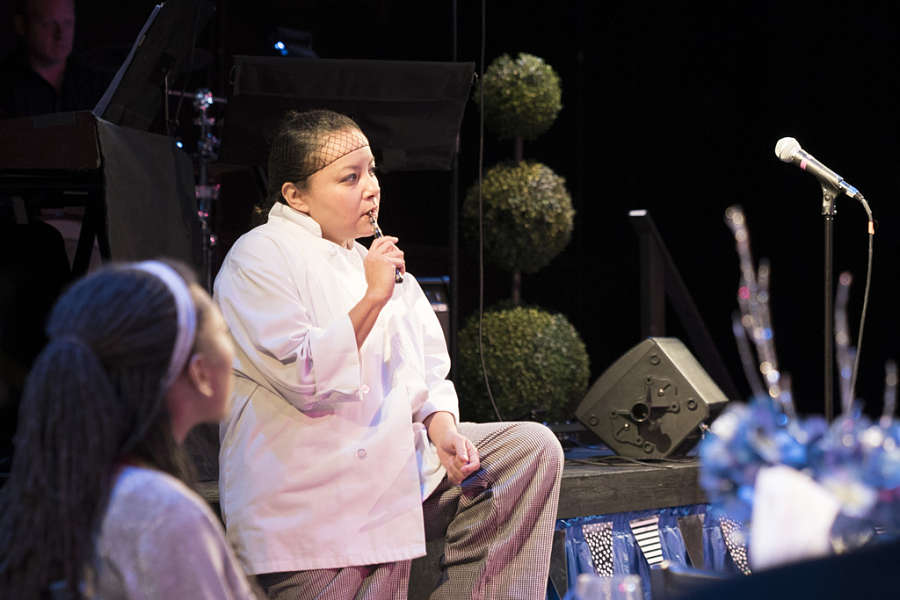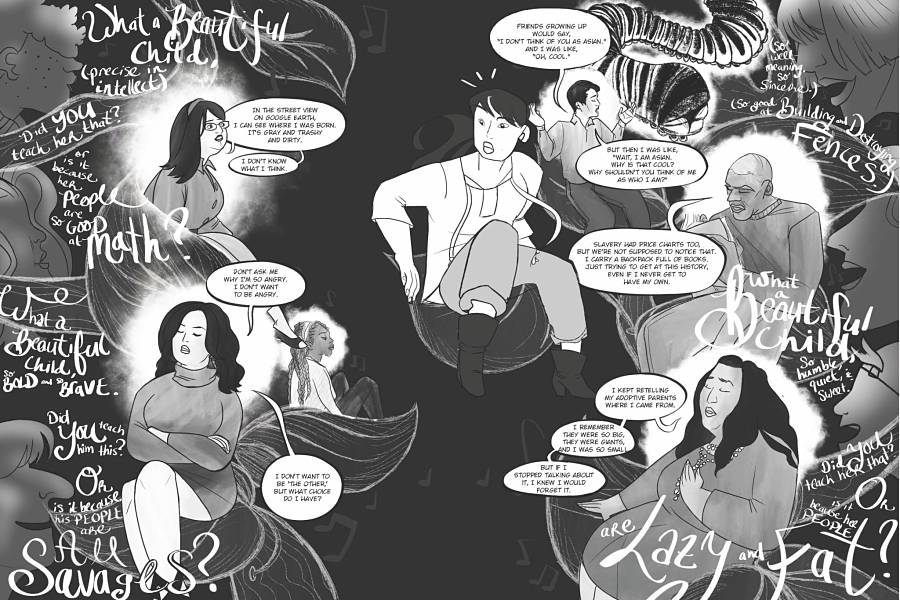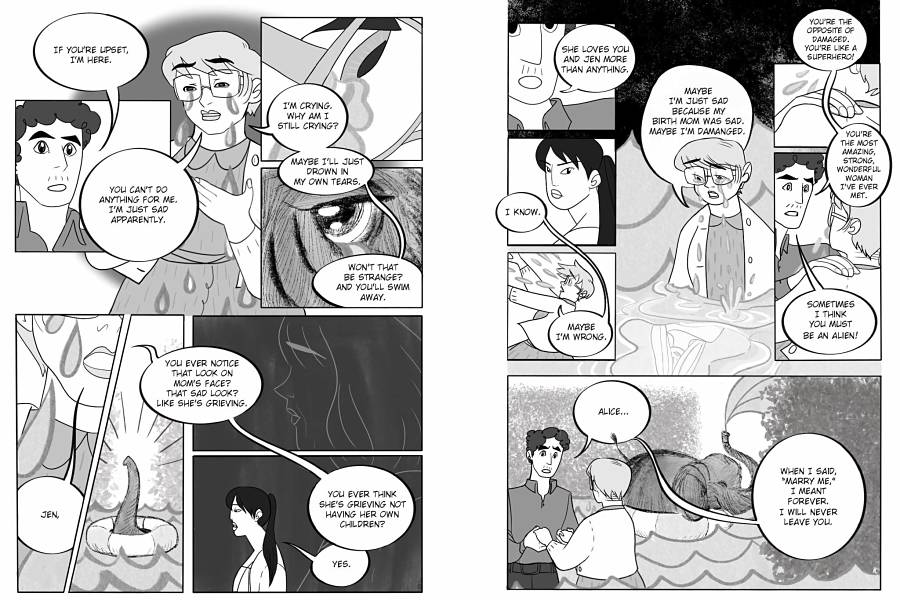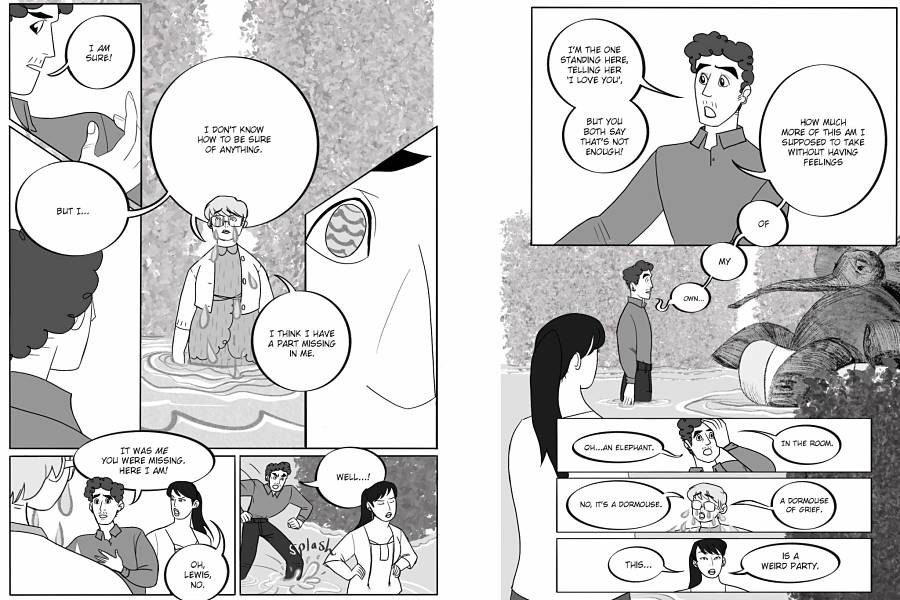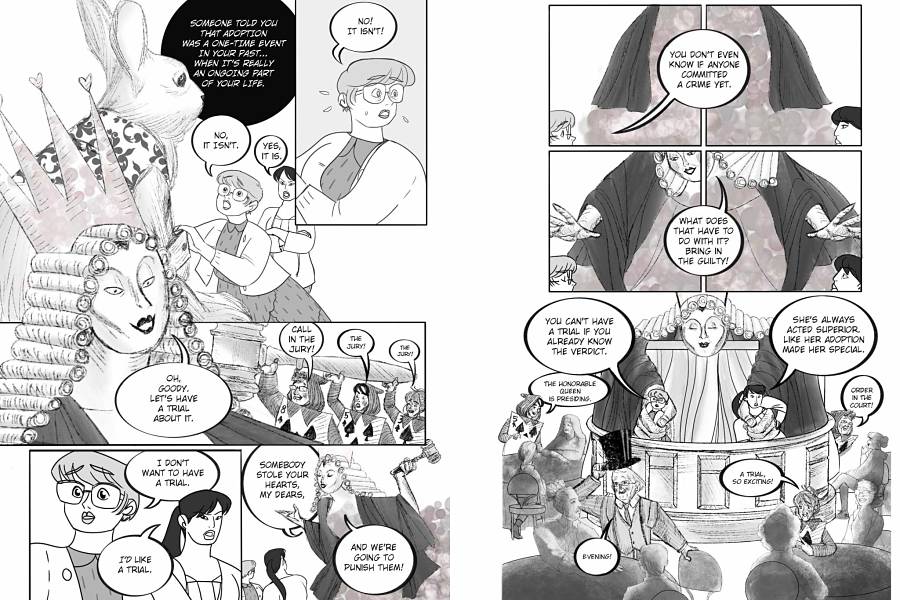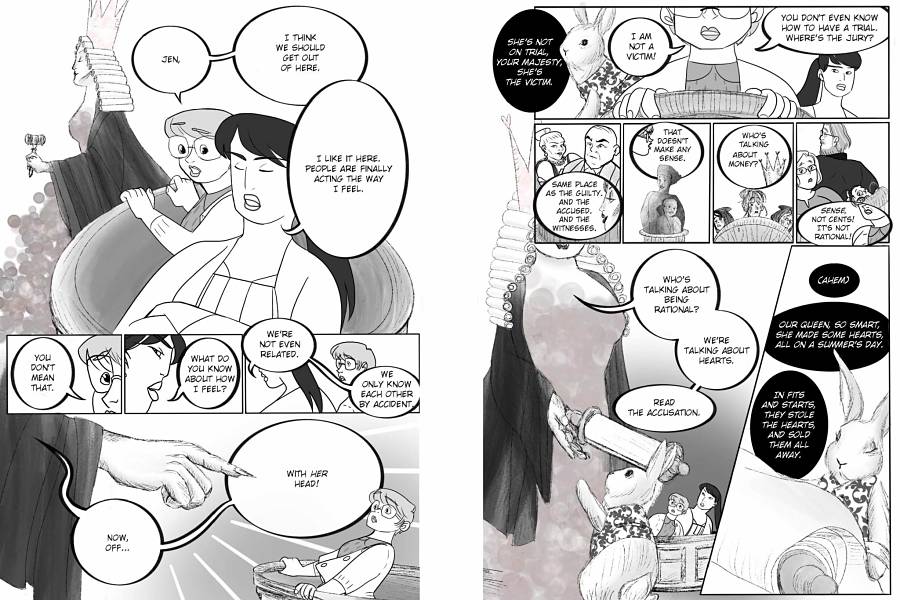How does a play live on after it closes? Every theatre person knows there’s an undeniable alchemy to a live production: the energy of the audience combined with the emotional power of the actors, the collective imagination that allows a person in rabbit ears to be a rabbit, the way our breaths, laughs, and tears synchronize as we watch. It’s magic made from the mix of multiple undeniable live elements: images and sounds, imaginations, and heart—both the artists’ and the audience’s.
St. Paul, Minn.’s Wonderlust Productions did a play in 2016 based on the true stories of people affected by adoption. We spoke with adoptees, adoptive parents, birth parents, siblings, and social workers. Then we constructed a fictional story, In My Heart: The Adoption Story Project, around which to frame what we heard. At an engagement party between an adoptee named Alice and her fiancé, Lewis, we tumble down the proverbial rabbit hole, where a chorus of characters confront the multiple perspectives, consequences, challenges, and commonalities that permeate the adoption community. The response from people in our audience here in Minnesota was more than simply enthusiastic—they practically demanded that we find a way to share the stories we gathered with a wider audience.
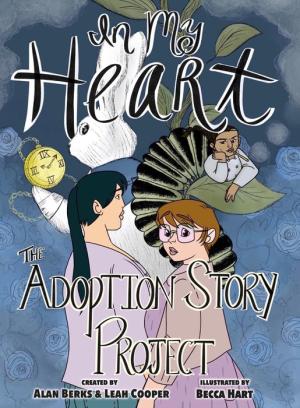 But how? While there is no substitute for live theatre, we stumbled on an equivalent kind of alchemy through the graphic novel. In a graphic novel, our waitress/white rabbit can easily become a giant magical rabbit. When our heroine cries a flood of tears, we can actually flood the frame/stage. Like theatre, the graphic novel resists the realism of television and film, requiring that an audience bring their own imaginations to the story. What’s more, the act of holding a book and turning pages in your hand brings it as close to a visceral, physical experience as is possible outside a theatre.
But how? While there is no substitute for live theatre, we stumbled on an equivalent kind of alchemy through the graphic novel. In a graphic novel, our waitress/white rabbit can easily become a giant magical rabbit. When our heroine cries a flood of tears, we can actually flood the frame/stage. Like theatre, the graphic novel resists the realism of television and film, requiring that an audience bring their own imaginations to the story. What’s more, the act of holding a book and turning pages in your hand brings it as close to a visceral, physical experience as is possible outside a theatre.
The two mediums are not the same, of course, but we’re genuinely delighted with the way this project brings some of what we love about theatre—stories, imagination, connection, and conversations—into a much wider world through a complementary art form.
Below you can find a small sample of the process, with illustrations by Becca Hart and production photos by Lindsay Marcy. Perhaps even in this post-pandemic world, this could be one of many ways theatres practice their craft in new and unexpected ways. The book is available on our website; reach out if you would like to know more.
